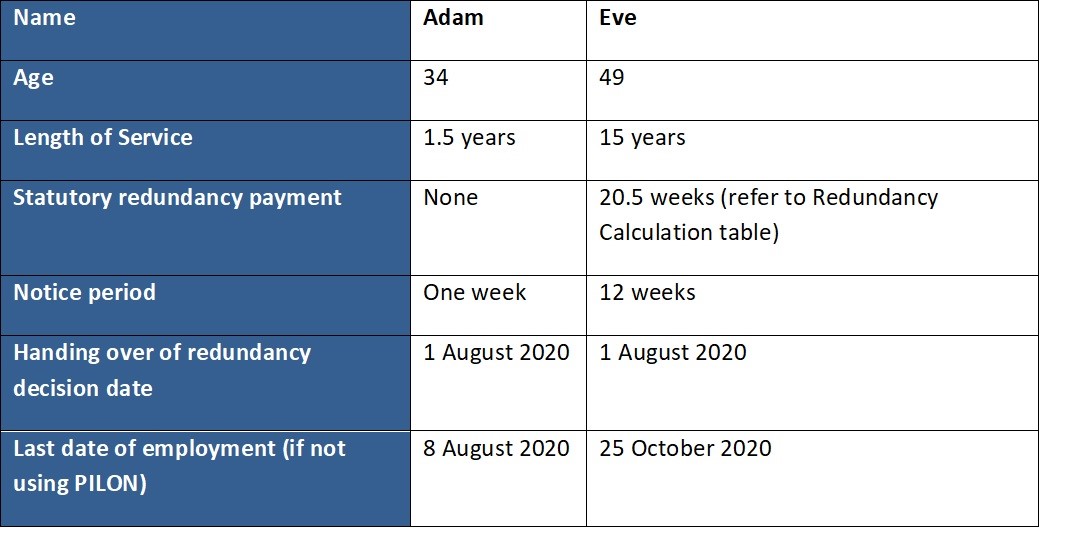How to Handle Redundancy Pay If Company Goes Bust: Key Information for UK Employees
How to Handle Redundancy Pay If Company Goes Bust: Key Information for UK Employees
Blog Article
Checking Out the Operational Dynamics of Firm Redundancy and Its Long-Term Sustainability

Redundancy Techniques for Service Connection
In order to ensure nonstop procedures, companies need to implement efficient redundancy approaches for business continuity. Redundancy in this context describes the replication of critical elements or features within a system to minimize the influence of potential failures. By integrating redundancy approaches, companies can enhance their resilience against interruptions created by numerous factors such as natural disasters, devices failures, or cyber-attacks.
One typical redundancy method is the execution of back-up systems and information storage space remedies. This involves creating duplicates of important data and systems that can be activated in situation of a main system failure. Furthermore, organizations can establish redundant communication channels and power sources to preserve connectivity and operations during unanticipated occasions.
Furthermore, cross-training employees to do numerous duties within the company can serve as an important redundancy strategy. This guarantees that vital tasks can still be performed even if key personnel are inaccessible as a result of health problem or various other reasons. Overall, effective redundancy methods are essential for businesses to copyright functional continuity and decrease the effect of potential disturbances.
Effect of Redundancy on Organizational Strength
Given the vital duty redundancy techniques play in making certain business continuity, checking out the impact of redundancy on business resilience comes to be important for comprehending the alternative operational dynamics of a company. Redundancy, when purposefully implemented, can dramatically add to boosting a company's durability in the face of unanticipated challenges.
In addition, redundancy can promote development and creativity within an organization as employees really feel encouraged to take computed risks, knowing that there is a security internet to support them in case of failing. On the whole, the impact of redundancy on organizational durability is extensive, shaping the long-term sustainability and success of a company.
Stabilizing Performance and Versatility in Redundancy
Achieving a harmonious balance between functional effectiveness and adaptive adaptability is a critical difficulty in the calculated implementation of redundancy within organizations. Reliable operations are crucial for maintaining productivity and cost-effectiveness, guaranteeing that sources are made use of optimally. Nonetheless, excessive focus on performance alone can result in rigidity, making it challenging for companies to adjust to unpredicted changes or challenges. On the various he has a good point other hand, flexibility enables organizations to react nimbly to developing circumstances, promoting innovation and strength. Yet, excessive adaptability without a solid functional structure can lead to inadequacies and variance.
To balance performance and adaptability in redundancy planning, companies must very carefully analyze their functional requirements, market characteristics, and tactical objectives. Carrying out lean techniques can boost effectiveness by simplifying procedures and removing waste, while promoting a society of versatility and continuous renovation can increase adaptability. Additionally, spending in cross-training programs and durable interaction channels can help cultivate a versatile labor force with the ability of dealing with varied tasks during durations of shift. Inevitably, finding the appropriate balance between performance and flexibility is crucial for building a sustainable and resistant company in the face of uncertainty.
Long-Term Sustainability With Redundancy Planning
To guarantee enduring feasibility and security, organizations must tactically straighten their redundancy preparation with long-lasting sustainability goals, consequently balancing operational efficiency with flexible adaptability. Business ought to see redundancy not as a reactive service to instant problems but as an aggressive strategy for long-lasting success.

Proactive Steps for Sustainable Company Workflow
Exactly how can firms proactively improve their functional sustainability for lasting success? Carrying out aggressive measures is necessary for firms intending to make sure sustainable operations. One vital strategy is to invest in technology and development to improve processes, decrease waste, and remain competitive in the marketplace. Taking on sustainable techniques such as minimizing energy intake, decreasing carbon impact, and maximizing resource utilization can not only benefit the atmosphere however likewise cause cost savings over time.
Furthermore, promoting a culture of continuous enhancement and discovering within the company can boost flexibility to altering market problems and customer needs. Encouraging employee involvement in decision-making processes and providing chances for expert development can improve morale, productivity, and total efficiency. Developing clear objectives, keeping track of essential efficiency indicators, and frequently evaluating progress are vital elements of proactive sustainability management.
Working together with vendors, consumers, and various other stakeholders to advertise lasting techniques throughout the supply chain can develop a surge result of positive impact - redundancy pay if company goes bust. By taking aggressive steps in the direction of operational sustainability, companies can build durability, drive innovation, and secure their long-term success in an ever-evolving company landscape
Final Thought

In the realm of organizational monitoring, the critical implementation of firm redundancy stands as an essential yet complex practice that requires a delicate equilibrium in between functional performance and long-lasting stability. By dissecting the functional characteristics that underpin company redundancy and examining its broader ramifications for business durability and flexibility, a nuanced understanding of just how redundancy strategies can form the future trajectory of a business starts to unfold.Offered the vital role redundancy strategies play in making certain company continuity, exploring the influence of redundancy on business durability ends up being critical for understanding the holistic functional characteristics of a business. On the whole, the impact of redundancy on business durability is extensive, shaping the long-term sustainability and success of a business.
In conclusion, comprehending the operational dynamics of business redundancy is essential visit this site for guaranteeing long-lasting sustainability.
Report this page